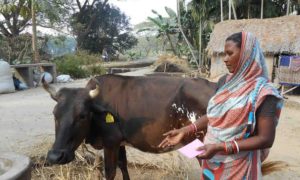What ails linking farmers to E NAM

 Regulated market committee (RMC) markets of Odisha are buzzing with the activity of registration of farmers, preparation for installing computer, software and labs for getting ready to connect RMC with electronic national agriculture market (E NAM).
Regulated market committee (RMC) markets of Odisha are buzzing with the activity of registration of farmers, preparation for installing computer, software and labs for getting ready to connect RMC with electronic national agriculture market (E NAM).
Emerging transformation in agriculture marketing through (E NAM) is going to be a challenging task for Odisha.
The farmer linkages with markets in the state are weak and performance of regulated agriculture markets has been inefficient owing to poor marketing infrastructure, inadequate support service and weak Institutions.
The poor performance of markets is a matter of concern as it affects livelihood, welfare, food security for poor household. There are missing gaps in linkages and ecosystem required to get integrated with technology enabled market.
Disconnected Markets
Markets under RMC have adequate infrastructure but absence of trading is conspicuous in these markets .The RMC markets have been in existence in the state for last 50 years and over the time have developed infrastructure for marketing under different schemes and programmes.
Most of the markets have entry gates, paved internal roads, godowns, shops, auction platforms, administrative office, farmer rest house and other amenities. In spite of the availability facilities and infrastructure for wholesale trading, buyers and seller do not visit these markets for transaction and trade.
On the other hand village periodic markets, which are located at a distance of 3 km to 4 km are unregulated, have poor infrastructure, have overrated market charges yet farmers visit these markets as they are the only option available to them.
Markets like Raigadh, Narayangarh were special commodity markets for cotton and jute respectively and had infrastructure specific for the trading of these commodities, over the time the shift in production towards paddy lead to low arrivals and markets began to become dysfunctional.
As the arrivals dipped the market infrastructure developed became irrelevant.
Fees collection at check gates
Markets have been more engaged in regulation and collection of market fee at check gates rather than facilitating market linkages for farmers.
This has led to increased concentration of RMC staff at check gates at the cost of management of markets. Positioning of market staff at check gates instead of market yards has made these markets defunct and devoid of any marketing activity.
 Pathways:
Pathways:
The leap in transforming the abandoned regulated markets of Odisha to E NAM is not only going to be not only a technological feat but also a socio cultural exercise.
1. Facilitate participation of small holders in local market
The first step is to facilitate participation of small holders and marginal farmers in local markets. The practice of selling produce at farmgate discourages the farmer to take the produce to market.
As producers become more commercially oriented, facilitating participation in E NAM will require training farmers in understanding the requirements of grading, assaying and online transaction.
2. Enabling market connectivity through market information
Investing in the communication infrastructure such as mobile phones network, internet linked rural kiosk which aid in strengthening market information, extension and other services to farmers needs to be made.
————————————-
You may like to read
———————————-
3. Capacity building and market led extension
Market led extension to transmit signals to farmers on new market opportunities will make physical markets relevant to buyers and sellers.
Empowering farmers with information, services and linkages through market led extension is a long term solution for brining farmers to markets in Odisha and linking them to E NAM.
4. Upgrading rural primary markets
As per the recommendations of Report on Doubling farmers income, the rural periodic markers need to be upgraded in to a function that enables aggregation and transportation from village level to wholesale market.
It has been advised to build on the available infrastructure and experience of the RPMs to establish large number of primary rural agricultural markets (PRAM) to aggregate produce and channelise it directly to consumers.
5. Adopting Model Agriculture Produce Livestock Market Act (2017)
The new model act allows for establishing private markets, farmer consumer markets managed by market committee, private consumer markets yards managed by a person and electronic trading platform.
Provisioning for single point levy of market fee across the state and unified single trading licence to realise cost effective transaction is an essential requirement for success of E NAM in Odisha.
*Hema Yadav is Director, CCS National Institute of Agricultural Marketing (NIAM) Jaipur










































